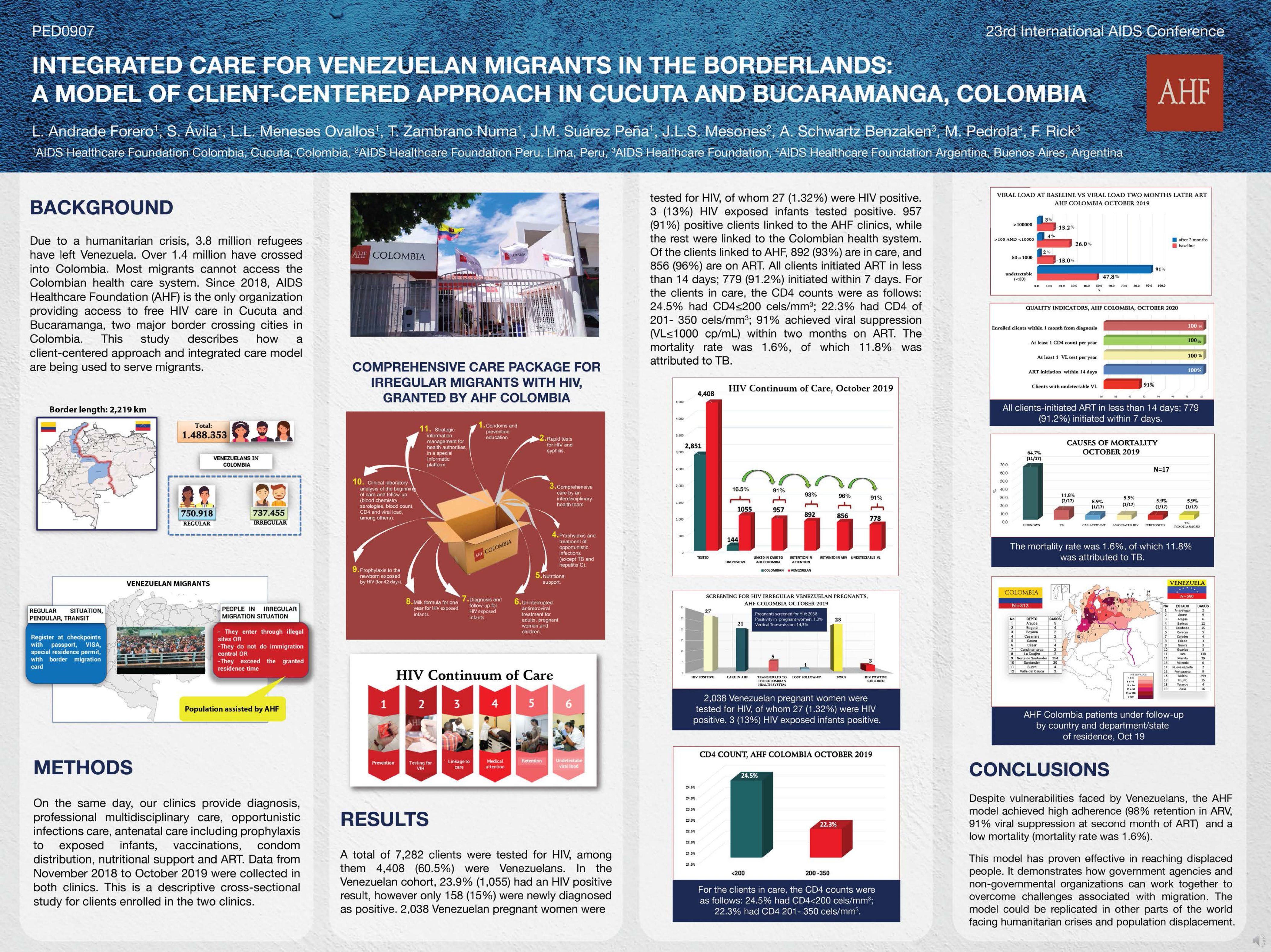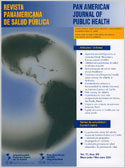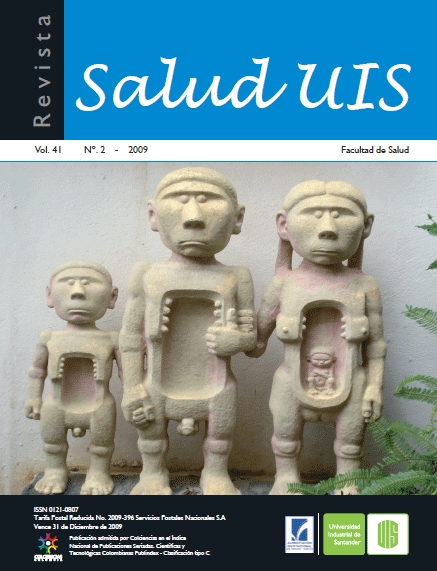Catàleg general VIH

Integrated care for Venezuelan migrants in the borderlands: a model of client-centered approach in Cucuta and Bucaramanga, Colombia
Resum
BACKGROUND: Due to a humanitarian crisis, 3.8 million refugees have left Venezuela. Over 1.4 million have crossed into Colombia. Most migrants cannot access the Colombian health care system. Since 2018, AIDS Healthcare Foundation (AHF) is the only organization providing access to free HIV care in Cucuta and Bucaramanga, two major border crossing cities in Colombia. This study describes how a client-centered approach and integrated care model are being used to serve migrants. METHODS: On the same day, our clinics provide diagnosis, professional multidisciplinary care, opportunistic infections care, antenatal care including prophylaxis to exposed infants, vaccinations, condom distribution, nutritional support and ART. Data from November 2018 to October 2019 were collected in both clinics. This is a descriptive cross-sectional study for clients enrolled in the two clinics. RESULTS: A total of 7,282 clients were tested for HIV, among them 4,408 (60.5%) were Venezuelans. In the Venezuelan cohort, 23.9% (1,055) had an HIV positive result, however only 158 (15%) were newly diagnosed as positive. 2,038 Venezuelan pregnant women were tested for HIV, of whom 27 (1.32%) were HIV positive. 3 (13%) HIV exposed infants tested positive. 957 (91%) positive clients linked to the AHF clinics, while the rest were linked to the Colombian health system. Of the clients linked to AHF, 892 (93%) are in care, and 856 (96%) are on ART. All clients initiated ART in less than 14 days; 779 (91.2%) initiated within 7 days. For the clients in care, the CD4 counts were as follows: 24.5% had CD4<200/mL; 22.3% had CD4 of 201- 350/mL; 91% achieved viral suppression (VL<1000 cp/mL) within two months on ART. The mortality rate was 1.6%, of which 11.8% was attributed to TB. CONCLUSIONS: Despite vulnerabilities faced by Venezuelans, the AHF model achieved high adherence and a low mortality. This model has proven effective in reaching displaced people. It demonstrates how government agencies and non-governmental organizations can work together to overcome challenges associated with migration. The model could be replicated in other parts of the world facing humanitarian crises and population displacement.- Tema:
Autoria:
ANDRADE FORERO, Liliana; ÁVILA. S.; MENESES OVALLOS, L. L.; ZAMBRANO NUMA, T.; SUÁREZ PEÑA, J. M.; MESONES, J. L. S.; SCHWARTZ BENZAKEN, A.; PEDROLA, M.; RICK, F.
Autoria institucional: AHF (AIDS Healthcare Foundation )
Autoria institucional: AHF (AIDS Healthcare Foundation )
Fitxa bibliogràfica
- Any de publicació:
- [2020]
- Descripció física:
- [1] p.
- Format:
- Fulletó
- Tipus de document:
- Col·loquis i ponències
- Notes:
- Póster presentado en la 23rd International AIDS Conference, celebrada de manera virtual del 6 al 10 de julio de 2020.
Continguts relacionats
També et pot interessar
-
Enfrentamento de HIV/AIDS e sífilis em mulheres venezuelanas migrantes na perspectiva de gestores de saúde no Norte do Brasil
-
Efectos de la migración venezolana sobre la notificación de casos de VIH en Colombia
-
Access to HIV care and treatment before and during the COVID-19 pandemic for Venezuelan migrants in four urban settings of Colombia





